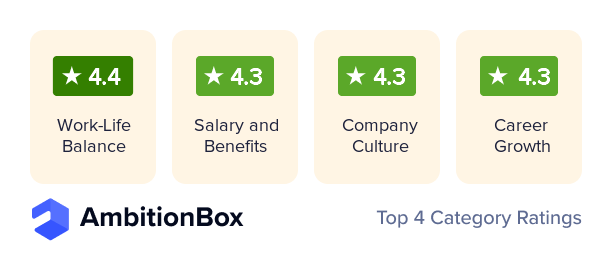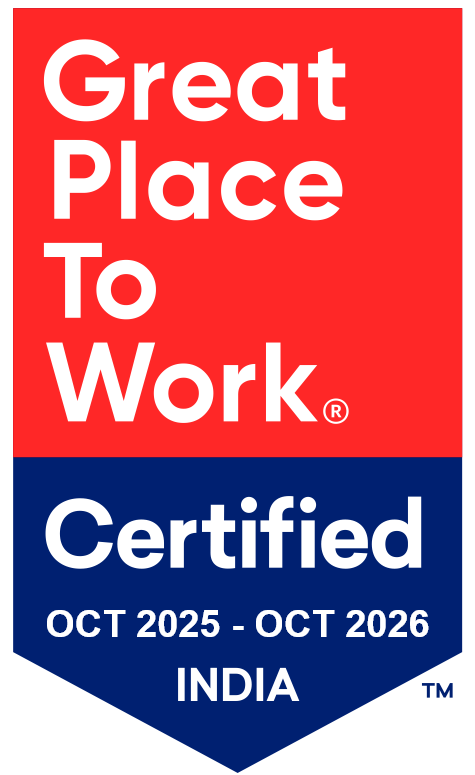COVID-19 Impact on the Job Market
The spread of COVID-19 has led to large-scale disruptions to the world’s economy, resulting in among other things, millions of job cuts. The impact has been across industries irrespective of their nature, size, and location of the business. The Services industry has been the hardest-hit; Hospitality, Travel & Tourism, Transportation are among the most affected. Brick & Mortar companies have also been laying off their workforce. The software industry, apart from a few large organizations which held on to its workforce for the first few months of the pandemic (e.g. Salesforce had pledged not to layoff employees in the first 90 days of the pandemic), by and large have also resorted to laying off employees when the situation aggravated. On the other hand, start-ups have been at the wrong-end of things – many have not only had to contract their operations and payroll size, some of them also found it difficult to continue their operations. Even Unicorns such as Airbnb had to freeze hiring and reduce their marketing budgets. According to McKinsey, 57mn US jobs are now vulnerable, which includes millions of white-collar jobs. Another 59mn jobs are at risk in the European Union, including in densely populated countries like the United Kingdom, and millions worldwide are in the same state.
However, everything is not gloomy amidst this pandemic. Every problem brings a new opportunity. In a situation marked by recruitment freeze, layoffs, furloughs, can be an opportunity for HR teams and recruiters. One way is to proactively shift from hiring for open positions to building a ‘Database of the Future’ – of candidates who can join new jobs in the future. A large volume of potential candidates are updating their resumes on job boards and social networking websites like LinkedIn and Xing. Recruiter teams can grab this opportunity to build a robust database using Applicant Tracking Systems.
Talent Pipeline
Talent Pipeline is one of the frequently used jargons in the field of recruitment & staffing
- What is a talent pipeline?
- How can businesses build an effective talent pipeline during crisis such as the current one?
- And, how a proactive Talent Pipeline Strategy is going to benefit organizations in the post-Covid-world?
Let’s get started with defining Talent Pipeline. Talent Pipeline is a typically a large pool of potential candidates, either an organization’s current employees who are considered for promotion prospects or external candidates who can fill vacant positions in the future.
For organizations, developing a significant talent pipeline takes time, and may need to spend months/years in developing goals, designing their strategy and executing it. One straight benefit of a well-planned & executed talent pipeline strategy is a shortened time-to-hire, or in other words, “Time-to Hire” will decrease resulting in time and cost savings. HR teams and recruiters are the key stakeholders in the Talent Pipeline ecosystem. Recruitment teams should focus on how the organization will perform in the future and the key roles to be hired. The talent pipeline is not about filling the current vacant positions but carefully planning and building a database of potential candidates for future roles, indicating that this has to be seen in conjunction with manpower planning.
How to Build an Effective Talent Pipeline?
Generally, people think that building a talent pipeline involves adding a bulk of candidates without assessing how this adds value to the team. As mentioned earlier, building a talent pipeline takes years, and different trial and error methods need to apply before finding a successful strategy. Below, we have listed some of the essentials to be considered before developing an appropriate strategy.
1. Understand the needs of the organization
Prior to sourcing candidates, all the stakeholders should determine the requirements and discuss their short-term and long-term hiring goals. HR teams and recruiters need to understand which direction the company plans to move in the post-COVID-19 world. For example, suppose the company is expanding its product portfolio, then they might require Engineers and Product Managers, or if the company is planning to enter new markets, they may need a sales team.
2. Identify the current and future skill needs
It is difficult to predict the post-COVID-19 world. Will organizations continue to work remotely? Or will people return to brick & mortar stores? Will business travel pick up speed, or are the days of in-person meetings over? Organizations need to assess the skills required for the future and determine a strategy to acquire these skills.
Before building a talent pipeline, HR managers and recruiter teams need to understand the current employee skill set. A skill-gap analysis is needed to have a bird’s eye view and determine the missing skills at the individual and at the team levels. Organizations can run surveys, skill assessment tests, and interviews with employees to discover the existing skills gaps. Based on this information, HR teams can start building the talent pipeline. The skill-gap analysis should involve all the stake-holders right from the top management to team leaders to employees and interns.
Artificial Intelligence and Machine Learning – Must have skills for the future
Another critical aspect that needs to be considered is AI/ML skill set. Irrespective of the industry, AI, and ML are the new tools and drivers of business. Companies that do not adapt to AI/ML-led business realities in the post-COVID-19 world may witness failure. Organizations need to focus on yet another area which is changing the way business is done – particularly operations. They need to understand the importance of automation and its adoption in their business. This will lead to understanding of the skill-sets they need. It is ideal for businesses to list their skills for AI and ML and start building a talent pipeline to handle the business of the future.
3. Finding Passive Candidates
Passive candidates also look for new and exciting opportunities, but they may not be aggressively looking. Passive candidates are everywhere but, identifying the right channels and proactively interacting with them must be done regularly to make it successful. The best possible way to find a passive candidate is to look through Social Media tools – considered as an ideal way to find candidates for the future. Using Social media to organizational advantage, HR teams can start developing the Talent Pipeline.
While, there are a plethora of social media channels, which one will yield the best results depends on many factors and varies from one organization to another. The obvious choice is LinkedIn which has more than 690mn users and growing rapidly. HR teams must be proactive in leveraging LinkedIn by providing career advice or sharing articles regularly. Influencers follow LinkedIn groups that specialized in niche technology or areas. Microsoft has reported that during the current crisis, LinkedIn has seen on-going growth in both number of users and engagement volume; and there is no better time for organizations to tap into LinkedIn and increase their conversation with potential candidates or capture new leads. This will eventually lead to building a new talent pipeline for the future. However, LinkedIn isn’t the only place for quality passive candidates. Other social media websites also need to be considered while developing a talent pipeline. Twitter Hashtags is a powerful tool in the hands of a recruiter in finding the latest trends and follow people who are talking about them. Facebook can also be used to discuss with candidates looking for newer opportunities. Other niche platforms such as Reddit, Slack, Quora, and Github are some of the other places to find future talent.
4. Clear & effective communication strategy (candidate engagement)
Regularly communicating with the potential candidates is required if an organization wants to hire top-notch talent in the market. About 96% of the job applicants want confirmation that their job application has been received, but less than 10% of job applicants actually receive such an email from the companies.
The majority of leads in the talent pipeline are warm leads and need to be kept in constant contact to make sure that they remain interested for open positions in the future. In uncertain times such as these, keeping constant touch with candidates is a balancing act. HR teams and hiring managers can periodically send relevant blog articles, press releases, and information on the company and how are they dealing with the current crisis and its plans for the post-COVID-19 world. Such information will likely help the potential candidate understand the company’s culture and values and help him/her develop an idea of how they fit in if there is an opportunity at a future date.
Automation can play an important role in organizational communication, particularly from a recruitment perspective. There is a need to invest in and upgrade communication tools with the latest technologies, such as Chatbots – a unique combination of automation and AI. Candidates being contacted, generally ask a lot of questions about the role, location, type of work, and the application process. Chatbots can help recruiters take off the load by answering some of the questions in real-time, which saves a lot of time and effort. The HR teams need to figure out the most common questions asked by the candidates at the initial stages, and supply the appropriate answers to the Chatbot tool.
5. Employer Branding
Organizations realize that merely building a talent pipeline with the aid of a latest ATS and capturing relevant details, and building a candidate persona is not going to add any value if they are not influenced or motivated to join the organization. This is where employer branding and recruitment marketing comes in handy. The reputation of a company helps attract the right candidates. During the current pandemic, even the companies that are among the “best places to work” have gone ahead with retrenchment of staff. Candidates need to be aware of how employers may respond at times of crisis and employer branding is an important source of information in their hands.
Building a strong brand is a must-have component in a company’s strategy, and this has to be implemented during the early phases of talent pipeline development.
Applicant Tracking System (ATS) – Tool To Build A Talent Pipeline
Applicant Tracking System or ATS is a tool which is widely used by recruitment firms to build a talent pipeline and also to run their day-to-day operations in a smooth manner. According to a research commissioned by Capterra, 94% of recruiters said that ATS had positively impacted their hiring process. Organizations that had used ATS, reported a decrease in unproductive time by 75%, a 15% decrease in time-to-fill, a 70% faster report creation, and registered 10% more placements per month than those firms which had not opted for ATS.
ATS is a must-have tool and its importance during crisis is all the more apparent. In the past few months, recruitment companies saw hundreds of additional applicants than usual, which had been a burden to the recruiters. Using an effective ATS, the additional load of candidates can be added to the talent pool easily for the future. For those organizations which haven’t stepped into an ATS as yet, this is the right opportunity to invest in one and streamline their hiring and recruitment processes based on their needs and budget and build a talent pipeline for the future.
Conclusion
Building an effective Talent Pipeline will require strategy, planning, resources, and backing along with the latest technologies. When the COVID-19 pandemic ends and businesses start operating normally, demand for highly skilled professionals is set to increase. Organizations must realize that getting ahead of their competitors and hiring candidates is not possible overnight. They need to back up their recruitment teams with a large talent pool powered by a flawless ATS system.
Apart from the technological aspects, constant interaction with the potential candidates will lay down the path for success in the longer run. For the talent pipeline to be successful, brand management of the company is a vital component. The organizations that maintain their company values and visions even during difficult times will have a positive brand image and attract highly qualified professionals.











